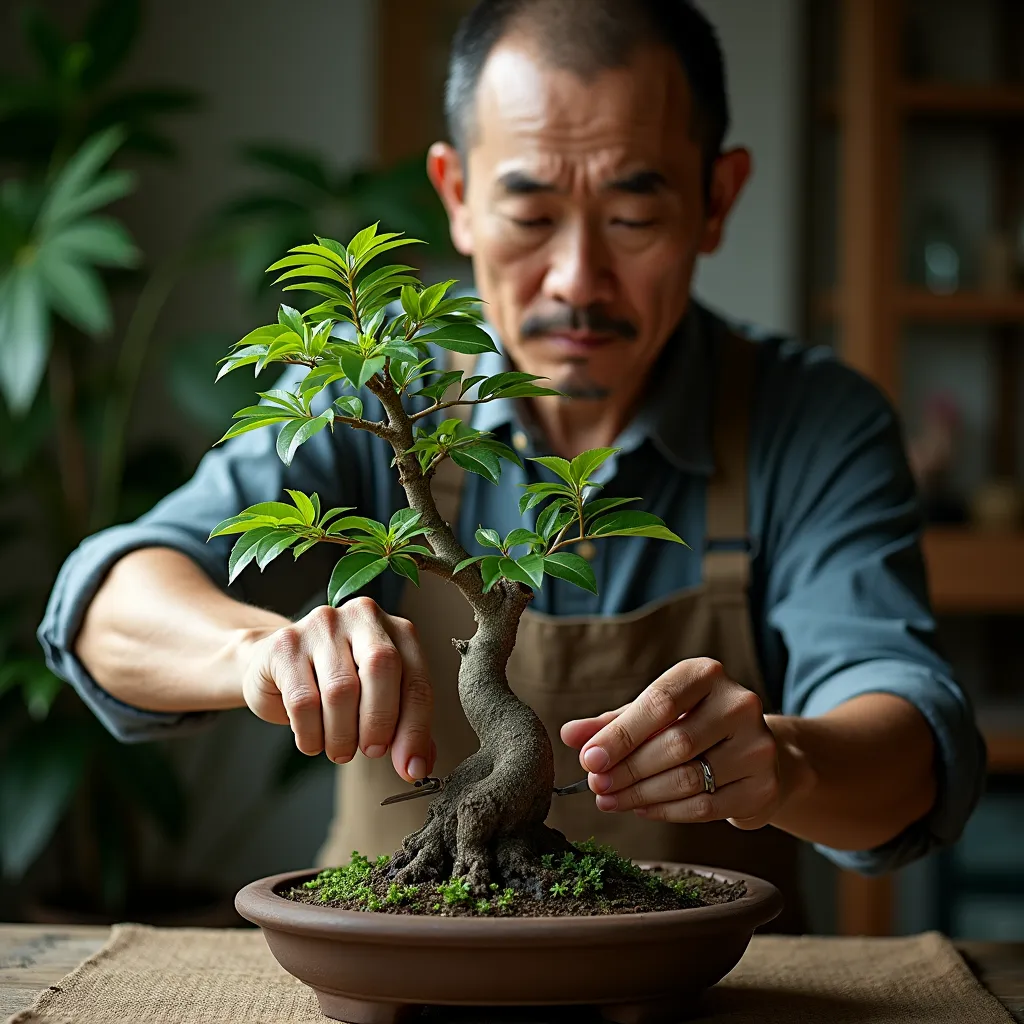Ultimate Guide to Pruning Your Bonsai Tree for Healthy Growth and Aesthetic Appeal
Pruning is a crucial skill for any bonsai enthusiast, as it not only shapes the tree but also promotes healthy growth. In this guide, we will explore the two main types of pruning: maintenance pruning and structural pruning. Maintenance pruning focuses on refining the existing shape of the bonsai, while structural pruning is more rigorous and aims to establish the tree's primary shape. Understanding the natural growth patterns of trees, particularly apical dominance, is essential for effective pruning. This guide will provide you with the knowledge and techniques needed to keep your bonsai healthy and aesthetically pleasing.
In addition to discussing pruning techniques, we will delve into the specific needs of different tree species and how to approach their care. Whether you are working with an Azalea or a conifer, knowing when and how to prune is vital for achieving the desired results. By the end of this guide, you will have a comprehensive understanding of bonsai pruning and the confidence to apply these techniques to your own trees.
TOC
- Understanding Tree Growth and Apical Dominance
- Maintenance Pruning Techniques
- Structural Pruning for Shaping
- Aftercare Following Pruning
- Wiring Techniques for Final Touches
- FAQ
- Conclusion
Understanding Tree Growth and Apical Dominance
To effectively prune a bonsai tree, it is essential to understand how trees grow. One key concept is apical dominance, which refers to the phenomenon where the main central stem of the tree grows more vigorously than its side stems. This natural growth pattern allows trees to reach for sunlight, often resulting in the inner and lower branches dying off as the tree prioritizes growth at the top.
By recognizing this growth pattern, bonsai practitioners can use pruning techniques to counteract apical dominance. Pruning the top and outer portions of the tree encourages growth in the inner and lower branches, allowing for a more balanced and controlled design. This understanding is foundational for both maintenance and structural pruning.
Maintenance Pruning Techniques
Maintenance pruning is a technique that can be performed throughout the growing season, typically from April to September for outdoor bonsai. For indoor bonsai, pruning can be done year-round. Regular pruning is essential for developing dense foliage and fine ramification.
To maintain the shape of your bonsai, follow these steps:
- Use twig shears or normal cutters to prune branches and shoots that have outgrown the intended canopy shape.
- Aim to prune approximately 10% of the foliage during each session, which can be done about four times a year.
- For pine trees and some conifers, pinch the shoots by hand instead of cutting them with scissors to avoid brown, dead foliage.
Different species of bonsai may require specific maintenance techniques, so it is advisable to consult species guides for tailored advice.
Structural Pruning for Shaping
Structural pruning is a more intensive process aimed at establishing the basic shape of the bonsai tree. This technique is particularly important for trees that have become overgrown or misshapen, such as the Azalea discussed in the video.
When performing structural pruning, consider the following:
- Bring back long new shoots to a uniform length.
- Reduce shoots with multiple branches to two, promoting bifurcating branches.
- Use twig shears to prune back branches around the tree, allowing for better visibility of the tree's structure.
Identifying which branches to prune is crucial for enhancing the design of your bonsai. Common branches to remove include suckers from the base, branches blocking the trunk view, and any dead or disproportionately thick branches.
Aftercare Following Pruning
After pruning, proper aftercare is essential to ensure the health of your bonsai tree. This includes protecting the tree from extreme temperatures, especially as it approaches fall.
Key aftercare steps include:
- Monitor the tree for signs of stress after significant pruning.
- Ensure the tree is not exposed to frost or low temperatures, which can be detrimental to its health.
- Provide adequate water and nutrients to support recovery and growth.
By following these aftercare practices, you can help your bonsai thrive after pruning.
Wiring Techniques for Final Touches
Wiring is a technique used to shape the branches of a bonsai tree after pruning. It allows for precise adjustments to the tree's structure and can enhance its overall aesthetic appeal.
When wiring branches, keep these tips in mind:
- Choose a branch that needs to be repositioned, such as one that is pointing upwards.
- Prune the branch if necessary to create a more balanced look.
- Carefully wrap the wire around the branch, ensuring not to damage the bark.
Wiring can be a delicate process, but with practice, it can significantly improve the design of your bonsai.
FAQ
What is the difference between maintenance pruning and structural pruning?
Maintenance pruning refines the existing shape of the bonsai, while structural pruning establishes the tree's primary shape.
When is the best time to prune outdoor bonsai trees?
Outdoor bonsai can be pruned from April to September, while indoor bonsai can be pruned year-round.
How much foliage should I remove during pruning?
It is generally recommended to remove about 10% of the foliage during each pruning session.
What should I do if my bonsai tree has dead branches?
Dead branches should be pruned to enhance the overall design and health of the tree.
Can I wire my bonsai tree after pruning?
Yes, wiring can be done after pruning to shape the branches and improve the tree's aesthetic appeal.
Conclusion
Pruning is an essential skill for bonsai enthusiasts, allowing for both healthy growth and aesthetic appeal. By understanding the principles of tree growth, mastering maintenance and structural pruning techniques, and providing proper aftercare, you can cultivate beautiful bonsai trees. Remember to tailor your approach to the specific needs of each species and don't hesitate to seek further education through online courses. With practice and patience, your bonsai will flourish and become a stunning centerpiece in your home or garden.

